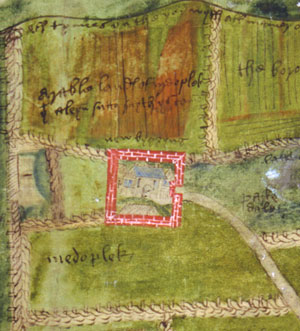 |
 |
 |
 |
 |
 |
 |
|
Fluctuating fortunes: changing the landscape (2/3)
The Cistercians in the North, as elsewhere, did much to transform the landscape. To prepare the land for farming and free more space for buildings, they embarked upon a programme of land clearance and reclamation, draining marshland, clearing woodland and converting stagnant pools into running water. At the heart of their agricultural and economic policy was the grange-system of farming. This established a series of agricultural centres worked by the lay-brothers, from which the land was cultivated, crops harvested and livestock reared. The Yorkshire Cistercians were particularly noted for their sheep-farming, which was suited to the uplands and moorlands in the North. They also made a considerable contribution to wool production and the wool trade. Whereas Roche and Kirkstall supplied raw wool to towns such as Doncaster, Leeds and Pontefract for domestic use, Fountains, Byland, Rievaulx and Jervaulx played a leading role in the export of wool, and gained a high reputation amongst foreign merchants. It was essentially under the Cistercians, and chiefly those in Yorkshire, that wool became the most lucrative cash-crop in Britain.
The White Monks’ exploitation of the land was extremely successful, but their accumulation of land bred hostility and led to complaints of greed. It was felt that they had pushed too far and would push further; their most vehement critics depicted them as predators, who would trick, sabotage or steal to gain land. Other more moderate commentators expressed the same sentiments, in less colourful terms, and the General Chapter was called upon to take measures to curb their avarice. The Cistercians in Yorkshire were also at the forefront of technological innovations. They were amongst the first to have tanning and fulling-mills, and one of the earliest water-driven hammer forges was built at Kirkstall. They may even have helped increase the use of horse-power in the twelfth century, and Jervaulx in particular was known for its horse-breeding.(3)
The White Monks pioneered the use of manure for fertilisation, and introduced the walled lavatorium to replace free-standing structures; this was probably intended to prevent the water freezing over. The walled lavatorium had taps rather than spouts, for it was the British Cistercians who led the development of taps; twelfth-century taps survive at Kirkstall Abbey. |
|||||

